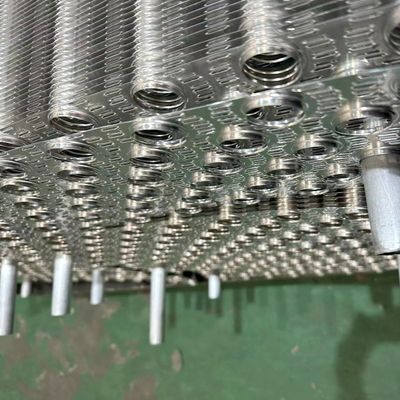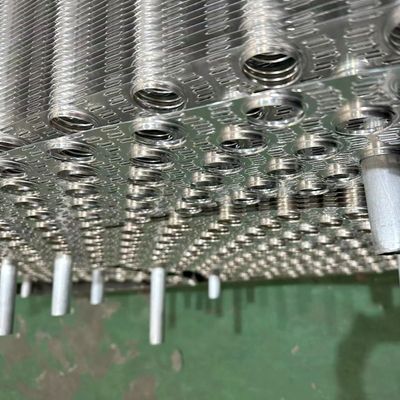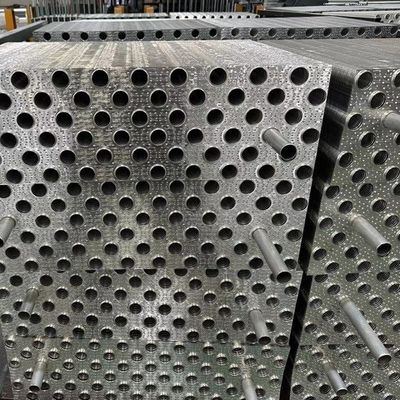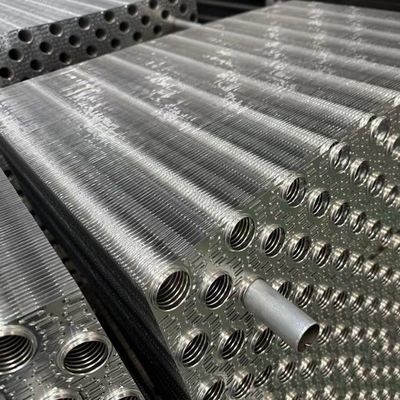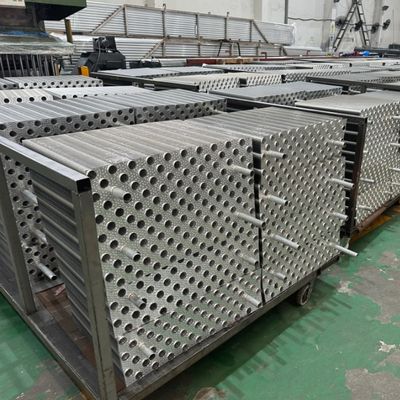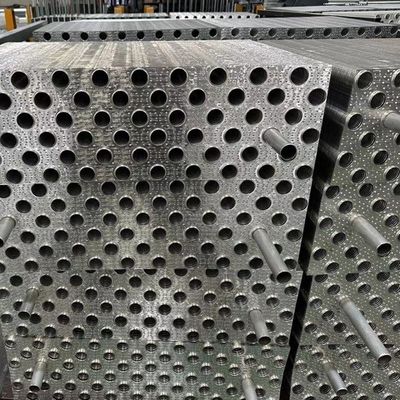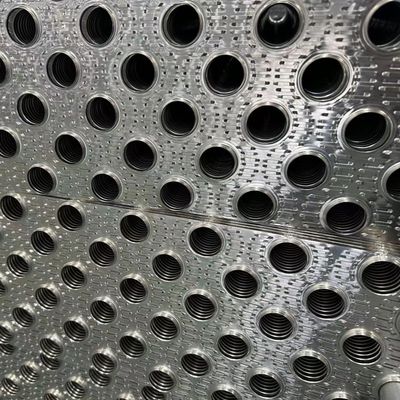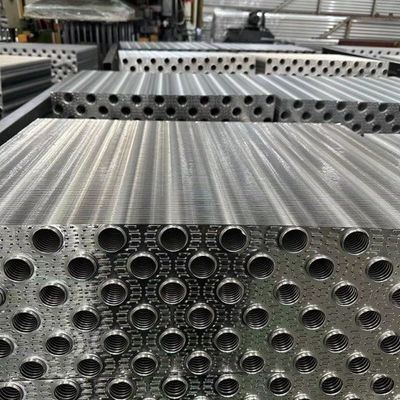25 X 21.65MM Louvered Fins Air Conditioner Condenser Louver Fins, Aluminum Fins, High Heat Transfer Performance FA8X16.
| Place of Origin | Jiangsu China |
|---|---|
| Brand Name | YUNNENG |
| Certification | SO9001 ISO14001 ISO45001 |
| Model Number | FA8X16 |
| Minimum Order Quantity | negotiation |
| Price | negotiation |
| Packaging Details | Standard export packaging |
| Delivery Time | 30 working days after received your down payment |
| Payment Terms | T/T |
| Supply Ability | negotiation |

Contact me for free samples and coupons.
Whatsapp:0086 18588475571
Wechat: 0086 18588475571
Skype: sales10@aixton.com
If you have any concern, we provide 24-hour online help.
x| Material | Aluminum | Fin Type | Louvered (frond And Rear) |
|---|---|---|---|
| Fin Mold | Φ12.3 | Pattern/mm | 25*21.65 |
| Available Fin Type | Louver,Raised Lance,Lance,Flat | ||
| High Light | 25MM Louvered fins,21.65MM Louvered fins,High durability aluminum louver |
||
Prod
Product description:Product description:Product description: What is the purpose of fins with valves? Fins themselves play an important role in heat exchangers. On the fin body, grooves are arranged in the gaps between refrigerant tubes through holes, and the grooves and refrigerant tubes are alternately arranged on the fin body through holes. The condenser fin of the air conditioner increases the heat exchange area of the fin and improves the heat exchange capacity of the condenser. But also increases the air circulation area between the condenser fins, improves the air fluidity, and reduces the direct friction between high-speed air and the condenser fins, thereby reducing the impact noise and improving the sound quality of the air conditioner. In addition, due to the grooves formed on the fin body, the sound waves generated by noise will enter the grooves during the propagation process and reflect in the grooves, and some sound waves will cancel each other, which further reduces the noise generated when air passes through the condenser. Features: Common design of louver fins; A common louver radiator includes a set of notches oriented in a regular manner for unidirectional enhancement of air turbidity. Until a certain point, increasing the severity of louver angle improves heat transfer efficiency. After that point, the effectiveness begins to decline. Understanding the directionality of louver fins is an interesting feProduct description:
lves play an important role in heat exchangers. On the fin body, grooves are arrangProduct description:
25*21.65 air conditioner condenser louver fins, aluminum fins, high heat transfer performance FA8X16.
Product Description:
What is the purpose of fins with valves?
Fins themselves play an important role in heat exchangers. On the fin body, grooves are arranged in the gaps between refrigerant tubes through holes, and the grooves and refrigerant tubes are alternately arranged on the fin body through holes. The condenser fin of the air conditioner increases the heat exchange area of the fin and improves the heat exchange capacity of the condenser.
But also increases the air circulation area between the condenser fins, improves the air fluidity, and reduces the direct friction between high-speed air and the condenser fins, thereby reducing the impact noise and improving the sound quality of the air conditioner. In addition, due to the grooves formed on the fin body, the sound waves generated by noise will enter the grooves during the propagation process and reflect in the grooves, and some sound waves will cancel each other, which further reduces the noise generated when air passes through the condenser.
Features:
Common design of louver fins;
A common louver radiator includes a set of notches oriented in a regular manner for unidirectional enhancement of air turbidity. Until a certain point, increasing the severity of louver angle improves heat transfer efficiency. After that point, the effectiveness begins to decline.
Understanding the directionality of louver fins is an interesting feature. The direction of the blinds must be considered, because the incorrect direction will reduce the performance, not improve it. Just like shark skin, the touch in one direction is smooth and the opposite direction is rough.
Heat transfer: very good
Cleaning/fouling ability: poor
Medium durability
Authentic louver fins
When designing a compact radiator, simplified geometry, improved heat dissipation and minimum pressure drop should all be considered. In order to achieve this goal, Yunneng's original louver fins have many types of fins to adapt to different heat transfer conditions.
Techical Parameters :
Tube-fin type air conditioning condenser and evaporator Specifications
| Fin mold | Pattern/mm | Fin type | |||
| Φ7 | 21*12.7 | Louver | Raised lance | Lance | Flat |
| Φ7 | 21*18.19 | louver | Raised lance | Lance | V-wave |
| Φ7.94 |
21*21.65
|
louver on waffle | V-wave | ||
| Φ10.2 |
20*15.5
|
Turbolator
|
|||
| Φ12.3 |
25*21.65
|
Turbolator
|
|||
| Φ12.3 |
32*27.71
|
Turbolator
|
|||
| Φ14.3 | 34*29.5 |
Turbolator
|
|||
| Φ14.3 | 34*29.5 | Raised lance | |||
| Φ25.45 | 64*32 | Upper&lower lance | |||
| Φ25.5 | 66.6*32.25 | Raised lance | |||
| Φ9.52 | 25*21.65 | Louver | |||
Support and Services:
The fin, micro-channel cooling tube and collecting tube can be customized according to customer's requirements, product width up can be custom, length direction can be any size.
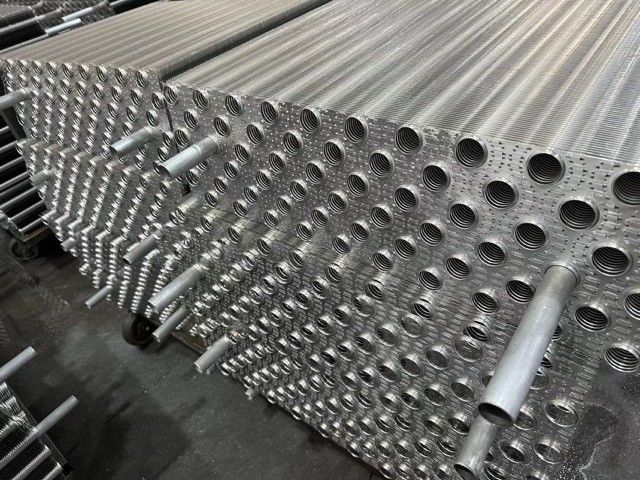
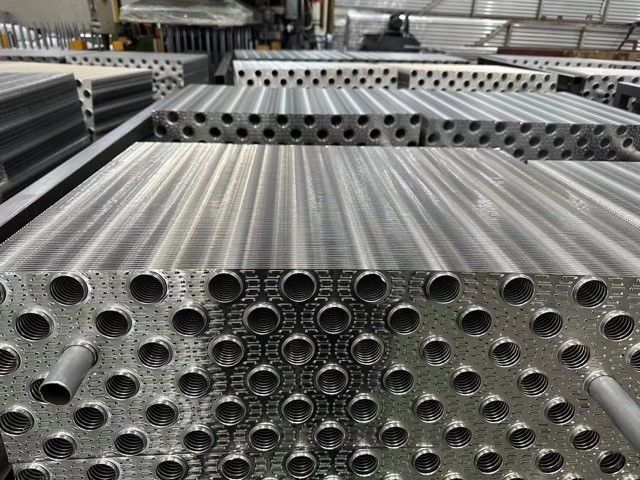
ed in the gaps between refrigerant tubes through holes,Product description: and the grooves and refrigerant tubes are alternateProduct description:ly arranged on the fin body through holes. The condenser fin of the air conditioner increases the heat exchange area of the fin and improves the heat exchange capacity of the condenser. But also increases the air circulation area between the condenser fins, improves the air fluiditniy, nd reduces the direct friction between high-speed air and tni he condenser fins, thereby reducing the impact noise and improving the sound quality of the air conditioner. In addition, due to the grooves formed on the fin body, the sound waves generated by noise will enter the grooves during the propagation process and reflect in the grooves, and some sound waves will cancel each other, which further reduces the noise generated when air passes through the condenser. Features: Common design of louver fins; A common louver radiator includes a set of notches oriented in a regular manner for unidirectional enhancement of air turbidity. Until a certain point, increasing the severity of louver angle improves heat transfer efficiency. After that point, the effectiveness begins to decline. Understanding the directionality of louver fins is an interesting feature. must





